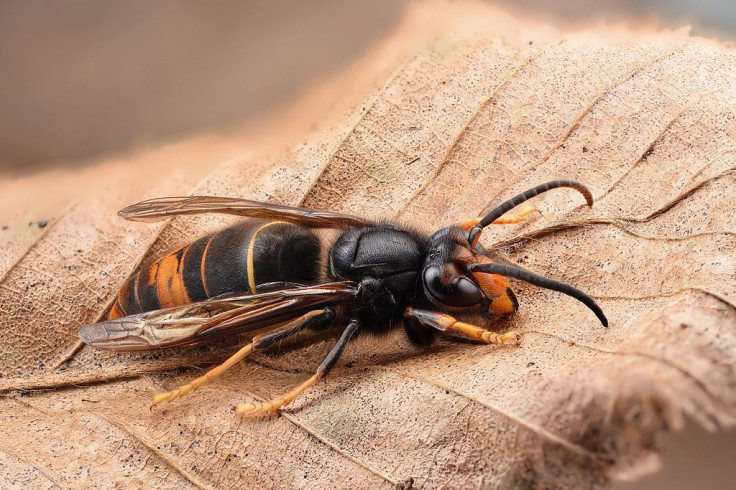Murder Hornet Update: Male Insect Caught In The US, Search Begins For Its Nest

KEY POINTS
- Murder hornets, also known as Japanese giant hornets, are the world’s largest species of hornet
- They are native to East and South-East Asia, but have recently been spotted in Vancouver and Washington State
- Hornets invade honey bee hives and destroy them, decapitating the bees
The first male Asian giant hornet was detected in the United States, officials said, triggering a massive hunt for the nest of the "murder hornet." The insect (also known as Vespa mandarinia) was caught using a bottle trap near Custer, Whatcom County.
"Trapping a male Asian giant hornet in July initially came as a surprise," Sven Spichiger, a managing entomologist at the Washington State Department of Agriculture (WSDA), said in a statement. "But further examination of the research and consultation with international experts confirmed that a few males can indeed emerge early in the season."
The statement also said additional traps were set to capture and tag a live Asian giant hornet, and then track it to its nest. If successful, the WSDA plans to "eradicate" the structure, they said in the statement.
"Citizen scientists and other cooperators" have helped WSDA set more than 1,400 traps throughout Washington to slow the spread of the hornets.
Murder hornets, also known as Japanese giant hornets, are the world’s largest species of hornets, identifiable by their large, yellow-orange heads and prominent black eyes. They are native to East and South-East Asia. However, this year, several of them were spotted in Vancouver and Washington State.
Washington beekeepers were the first to spot the Asian giant hornet after they discovered hundreds of bees with their heads ripped off in December. According to WSDA, hornets invade honey bee hives and destroy them from the inside out in a matter of hours.
If the species manages to establish itself in Washington and surrounding areas, it will create "negative impacts on the environment, economy, and public health," the WSDA said.
An unmated Asian giant hornet queen was the first to be captured using WSDA traps July 14. While the Asian giant hornet does not generally attack people or pets, it can when threatened. In Japan, giant hornets cause between 30 to 50 deaths per year. But most of the fatalities are caused due to allergic anaphylactic reactions rather than acute toxicity.
"Their stings are big and painful, with a potent neurotoxin," Seth Truscott, of the college of agricultural, human and natural resource sciences at WSU, previously told WSU Insider. "Multiple stings can kill humans, even if they are not allergic."
© Copyright IBTimes 2025. All rights reserved.





















